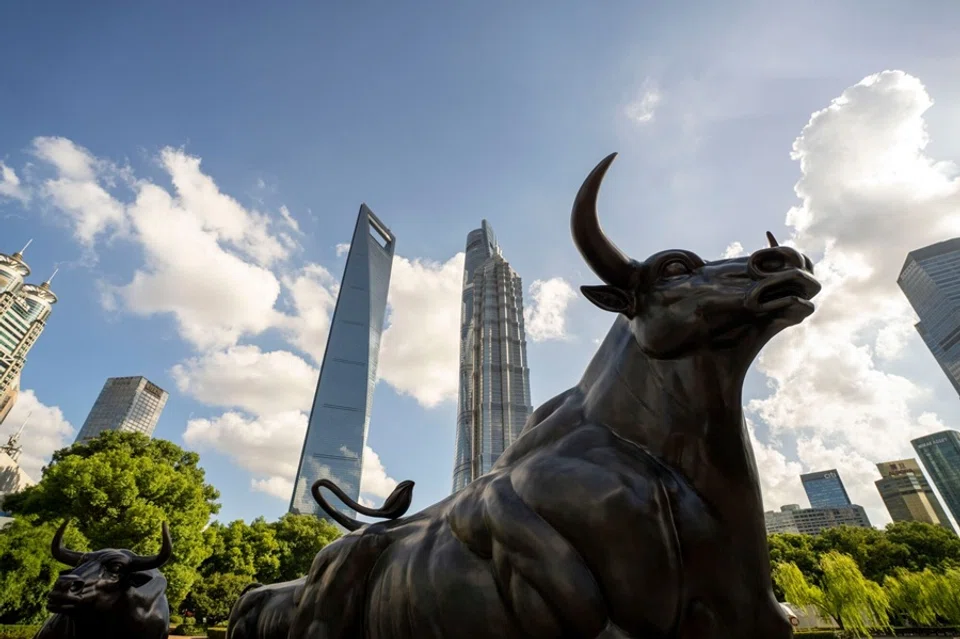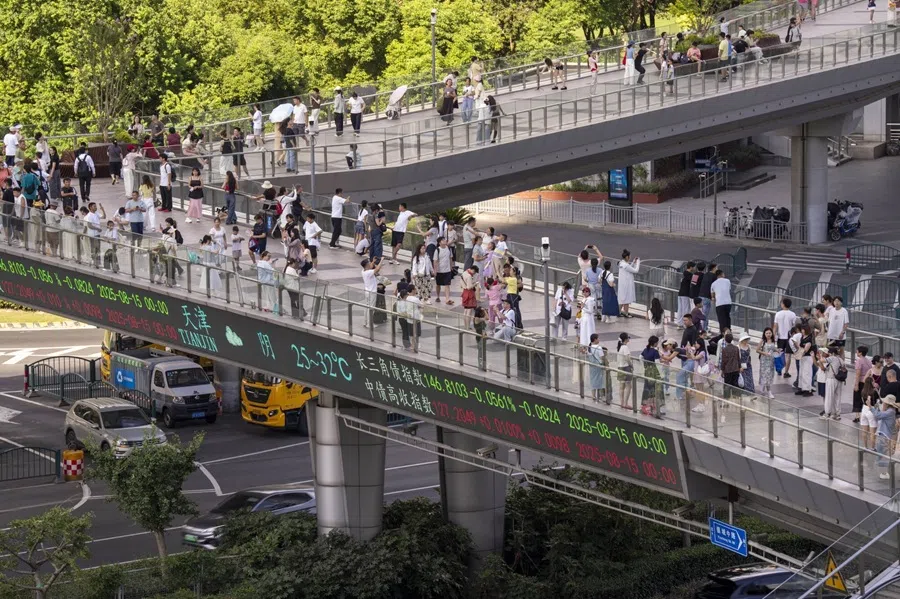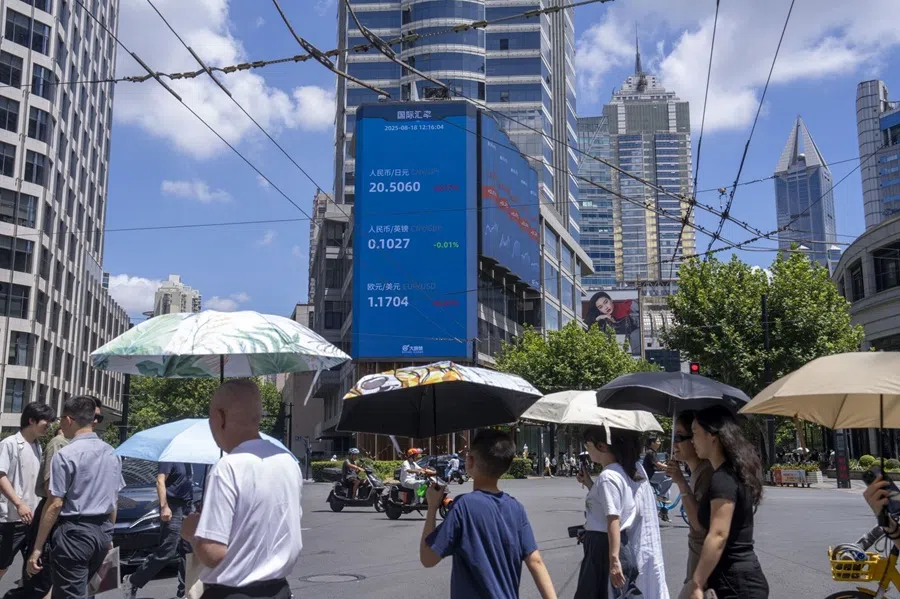China’s surging A-share market: Recovery or bubble in disguise?
China’s A-share market has surpassed 100 trillion RMB in total capitalisation, driven by strong SOE performance, policy shifts, and attractive valuations. But with volatility and uneven gains, is this rally a sign of lasting recovery — or something less stable? East Asian Institute senior research fellow Bo Chen gives his take.

China’s onshore equity market crossed a historic threshold on 18 August, as the combined market capitalisation of more than 5,400 Shanghai- and Shenzhen-listed companies rose above 100 trillion RMB for the first time. The landmark reflects a broad-based rally led by state-owned blue chips and financials, a pick-up in domestic fund inflows and renewed appetite for value stocks amid improving liquidity conditions and policy support.
This widening gap has nudged households and institutions to rotate a portion of their savings into high-dividend shares, particularly in financials, energy and telecommunications.
Multiple drivers converged to push the market higher
First, the relative appeal of equities has improved as bank deposit rates have drifted lower, and the trend seems likely to continue while dividend yields on high-payout stocks have remained elevated.
Over the past year, major banks trimmed deposit rates multiple times, driving the average one-year retail deposit rate toward roughly 1.15%. In contrast, many listed banks on the A-share market offer dividends that yield a higher rate of return (in addition to capital gains).
For instance, ICBC, the biggest bank in China as well as in the world, paid a dividend of RMB 0.1646 per share on 22 August, and the yield rate would be more than 3% if you purchased ICBC stock in July 2024, with an average price of RMB 5.4 per share.
Note that this yield rate does not take capital gain into account (more than 8% during the same period). This widening gap has nudged households and institutions to rotate a portion of their savings into high-dividend shares, particularly in financials, energy and telecommunications.
According to the People’s Bank of China, household savings in July 2025 declined by RMB 1.1 trillion, whereas net non-bank deposits (typically in securities, funds and trusts) increased by 1.39 trillion RMB, with 1.92 million additional accounts opened in A-share markets.

Second, incremental policy relaxations have enabled more public money to enter equities. Vowing to become “patient capital”, China’s public funds have gradually increased their long-term investment in the A-share markets.
Recent measures include expanding the investable universe and allocation bands for public mutual funds and pension-related products, streamlining product approvals and improving the liquidity profile of exchange-traded funds (ETFs). Together, these steps have lowered friction for long-term capital — such as public funds, insurance money and pension schemes — to increase equity exposure, supporting valuations and turnover.
The composite index of A-shares in Shanghai, for example, was still below 3,800 as of 26 August, far from its historical high at 6,124, whereas its US counterparts have reached their all-time highs recently and are likely to break them soon.
Third, valuation differentials have become conspicuous after several years of adjustment in Chinese assets versus high-priced US counterparts. The composite index of A-shares in Shanghai, for example, was still below 3,800 as of 26 August, far from its historical high at 6,124, whereas its US counterparts have reached their all-time highs recently and are likely to break them soon. International investors have been worried that a bubble in the US stock market is emerging, and China’s stock market has become a critical alternative given its overall economic resilience, which has beaten market expectations.
Fourth, the surge in China’s digital technology has given the market confidence. As the whole world is quickly embracing the digital economy, leading companies, such as the “Magnificent Seven” high-tech companies in the US, have received the spotlight of investors in the past few years. China’s fast development in digital technology, represented by companies like DeepSeek, reminds investors that China is also a leading digital technology power that might not lag the US in a significant way, and the market values of relevant firms are therefore systematically underestimated.
A signal of economic rebound?
As of 25 August, the A-share market in Shanghai was the second best-performing market in the world with a year-to-date growth peaked at 19.03%, just below the Hang Seng market in Hong Kong (with year-to-date growth of 31.63%). However, it is important to be cautious when reading the strong performance as a signal of a rebound in China’s economy.
The expansion of the A-share market has been primarily driven by two sectors: the central state-owned enterprise (SOE) cluster...and high-tech companies...
First of all, the expansion of the A-share market has been primarily driven by two sectors: the central state-owned enterprise (SOE) cluster, emphasised in China’s specific valuation system, which has seen year-to-date gains exceeding 30%, and high-tech companies listed on the Shanghai Stock Exchange’s Science and Technology Innovation Board, with gains surpassing 27% so far this year.
The SOE sector appears to benefit most from policy relaxations that allow public funds to invest in the stock market, as these funds typically allocate more to large state-owned enterprises. Meanwhile, the strong performance of the high-tech sector reflects growing confidence in China’s technological development.

Second, historically, China’s stock markets have not played their role well as a leading indicator for economic development. Between 2002 and 2006, China’s economy grew rapidly, largely benefiting from its entry into the WTO in December 2001. However, the A-share composite index rose only modestly — from 2,245 to 2,675 — reflecting an annual growth rate of about 3.7%, significantly slower than the average GDP growth rate of 10.4%. Since 2008, China’s nominal GDP has more than quadrupled compared to its 2008 level, while the A-share composite index remains below two-thirds of its 2007 peak of 6,124 points.
Indeed, unlike the hot stock markets, many macroeconomic indicators in July 2025 clouded China’s economic outlook. The Producer Price Index (PPI), a key indicator of overcapacity, continued its decrease for the 34th consecutive month since October 2022. The housing price index continued to decline — and at an accelerating rate. The unemployment rate unexpectedly increased, due to the graduation season of colleges and vocational schools, and the rate in August 2025 will likely be even worse.
... the current market upswing is more likely a recovery than a bubble.
Or a bubble?
However, although the expansion of the A-share markets above RMB 100 trillion and the recent surge in the composite index may not reflect a more prosperous future for the economy, it does not necessarily mean a bubble in the market.
As of 26 August, the average price-to-earnings (P/E) ratio of the Shanghai Composite Index — a key indicator of market valuation — stood at around 15.66. This is roughly one-third below the peak of the past decade and more than 60% lower than its historical high, suggesting that the current market upswing is more likely a recovery than a bubble.
The A-share market’s ascent above RMB 100 trillion in capitalisation is the product of improved relative returns versus cash, structural easing of allocation constraints and compelling valuations. While leadership currently rests with large SOEs and dividend-rich sectors, a healthier breadth across SMEs as earnings visibility improves could define the next leg, turning a milestone into a platform for more balanced, durable equity gains.
With the Shanghai Composite’s P/E still well below past peaks, the balance of evidence favours “repair over bubble”. However, there is a need to be cautious due to factors like sector rotation, return dispersion and policy-sensitive volatility as the market seeks a firmer macro footing.





